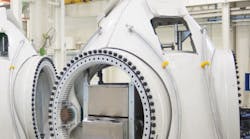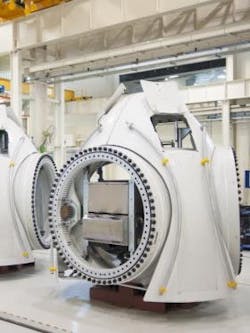The factory of the 21st Century will be brilliant, according to General Electric. With this statement, the company reflects its commitment to use the latest Industrial Internet technologies to consistently, and in real time, optimize operations.
Courtesy of GE Reports
The Brilliant Factory is really a mindset, said Christine Furstoss, global technology director at GE Global Research, during a recent talk with GE Reports editor, Tomas Kellner. She explained that GE can now collect more data than ever before because of better sensors and better control systems. And they are able to analyze that data better than ever before because of advanced software and analytics. Finally, they are better able to take action, to understand how well processes are working inside the factory. This allows GE to understand and handle things when they don’t go right, and do that in real time, maintaining the highest quality and on-time delivery.
Stephan Biller, Chief Manufacturing Scientist at General Electric, described the same commitment during his keynote at the ARC Forum in February. There, he used the concept of a “digital thread” that will tie together everything from virtual product design through to the service and repair shop. All stages of factory development will be linked together through a production feedback loop and a design feedback loop that will both make use of information gained throughout the factory so that production can continuously improve. The ultimate goal, of course, is to have a factory that virtually never stops.
GE has 400 factories around the world, conducting many different types of operations and making many different types of products, from lighting systems to power generation turbomachinery and healthcare equipment. No two factories look identical; they all have needs that are a little bit different.
GE is using their Brilliant Factory to create a toolkit with many different solutions at their disposal. The solution can be a sensor that collects data or a type of program that analyzes the data, or it may be a control system to change the machine and adapt in real time based on new information.
“We’re learning how to apply these different tools at the right places and at the right time in our factories," Furstoss explained. “Just like no two factories are identical, no two brilliant factory solutions will be identical.”
The opportunity to apply new types of thoughts to GE factories really arrived over the last three or four years, with the emergence of the Industrial Internet and the ability to handle very large data sets.
During machining a part, drilling a hole or putting new materials together, GE factories collect an enormous volume of important data that was previously out of reach. Being able to transmit that data, store that data, figure out which data points are important and then do the analysis; that has been a huge step-change in enabling their concept of a Brilliant Factory.
To learn more about GE’s view of the 21st Century factory, see the full interview with Christine Furstoss in GE Reports.




